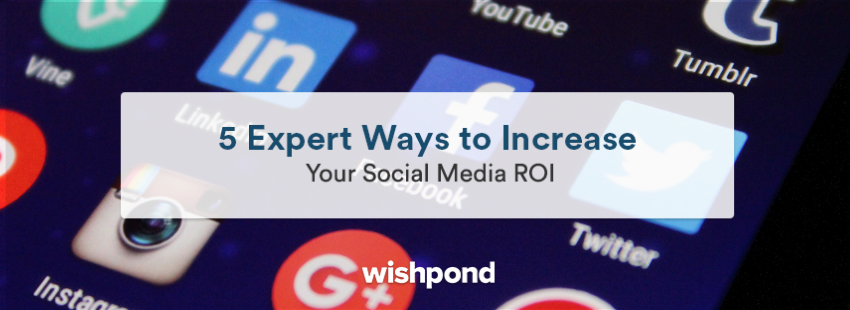Since 2018, people have been using social media notably more than they did in 2017, including YouTube (63%), Instagram (61%), Snapchat (58%), and Facebook (52%), with Pinterest and Twitter coming in last.
As a brand, you should be active on at least two or more of the social media platforms listed above. After all, those are where most of your customers are. Brands like Birch Box and Moon Pie increased their revenue with a cult following through the power of social media.
So, what about you?
Are you on track with your social media strategy? How do you know if you’re making waves, or rowing in circles? You measure and increase your social media ROI.
Let’s go beyond “how to increase social media followers”. Instead, I’ll be showing you five expert ways to increase your social media ROI.
Two Important Things to Know About Your Social Media ROI
Before we dive deep, let’s make sure you can swim. Here’s some what’s what on social media ROI every marketer and business owner should know:
What is Social Media ROI?
If you’re not familiar with the word ROI, it stands for ‘Return On Investment’, a metric that shows how much revenue or non-monetary value like comments or email sign-ups you’ve received from your social media activities.
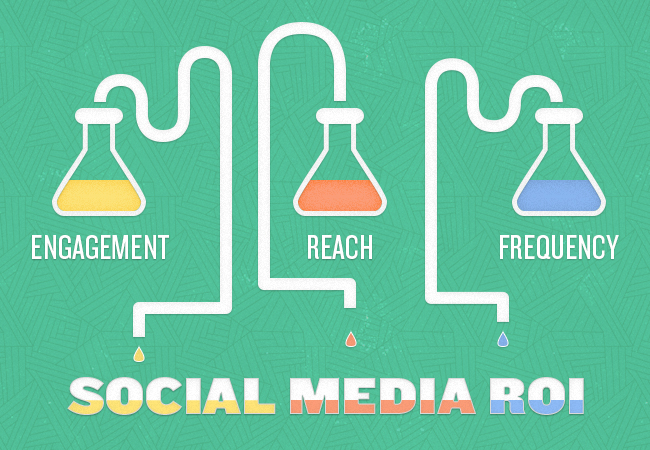
Why Calculating Your ROI is Life or Death
Calculating your ROI allows you to analyze if your social media efforts are bringing in revenue or costing you.
Some brands thrive better on some social media platforms than others. It’s about investing in the platform that gives back the most to you. That’s not to say you can’t improve your work on a low-performing social media platform, but sometimes it’s best to cut your losses.
After measuring and monitoring your social media ROI, you can use this formula below to give yourself a number to use and compare.

Profit– the money you’ve earned from your social media marketing efforts (i.e. how many completed orders you received)
Investment– the total cost of your social media marketing efforts (e.g. Facebook ad spend)
While it’s easy to use this formula to calculate your tracking profits and revenue, it gets a little harder when it comes to content, and intangible results like ebook downloads, which is why using UTM links are so important to help you with tracking.
Now that we’ve covered the basics, it’s time to learn how to increase your social media ROI.
1. Measure Your Social Media ROI
You clicked on this article to learn how to increase your ROI, but how do you increase something you’ve never taken the time to measure?
Knowing where you stand by measuring your ROI helps to pinpoint areas of your social media strategy to see what’s working and what’s not so you can shift your budget accordingly.
The best place to start if you haven’t been tracking your ROI is with the following it over a three or six month period:
1. ROI on Social Media Ads: How much profit did you receive from your social media ad campaigns?
2. Website Traffic from Your Social Media: Track links you use in social media. Find out your conversion rate from social media to paying customer. Learn how many people completed a purchase after engaging with your post and clicking on your link or shoppable post.
3. Social Media Engagement: Track your content’s reach, likes, comments, and engagements. It’s been proven that the more engaged people are with a brand on social media, the higher the influence it has on the potential buyer.
4. Use Google Analytics: This tool is a marketer’s best friend. You get data tailored to your business website and social media platforms. You can easily Set Up Google Analytics In Under 15 Minutes and begin to track and measure your social media traffic.
2. Social Media Strategy or Social Media Failure
As a content marketer, I constantly hear two types of stories when it comes to social media: those who tried it and see little to no result on their investment, and those who can’t get enough of social media because of the growth and revenue it’s providing them.
The key difference between the two is a social media strategy.
Social media isn’t a get rich quick scheme or something you can get results from with just one post (unless it’s viral, which is rare and unpredictable). You not only need to invest money but time to plan what you’re going to do with your social media platform and how you’ll connect with your customers.
3. Create a Social Media Marketing Funnel That Works
Your social media also plays an essential part in your marketing funnel. It builds engagement and attracts new leads to discover and buy from your business.
Social Bakers breaks down how your ROI metric and marketing funnel go hand in hand, and why it’s important to consider the two as one:

Still not convinced about using a social media strategy? Here’s a case study on one of our Wishpond clients: How Bhu Foods Drove 35% Online Sales Growth.
Creating a social media strategy can be as easy as writing a one-pager, or as detailed as you’d like it to be. Having a plan that shows you step-by-step how you’ll be using your social media platforms is the end goal. Once you have it mapped out, you’ll have to review it once a month, quarterly or yearly to make sure you’re on track with your marketing and social media goals.
Not sure where to start? Here are two free templates that can help you to get your social media up to speed:
11-Step Social Media Marketing Plan Template
How to Make a Social Media Checklist
4. Manage Your Social Media Ads Wisely
We spoke earlier about how it was crucial to track or measure your ROI on social media ads; let’s talk about how managing your ads and budget wisely helps to increase your ROI.
We always hear success stories about social media ads on platforms like Facebook and Instagram. Having a successful ad is much more than writing a caption, setting a budget and hitting publish. It takes knowing your audience and crafting the perfect ad for them.
For instance, Tropicana got a 45% return on ad spend, plus 58% more sales volume compared to their other social media platforms. Their ads stayed focused on awareness of their new #MadeToGo Tropicana bottles.
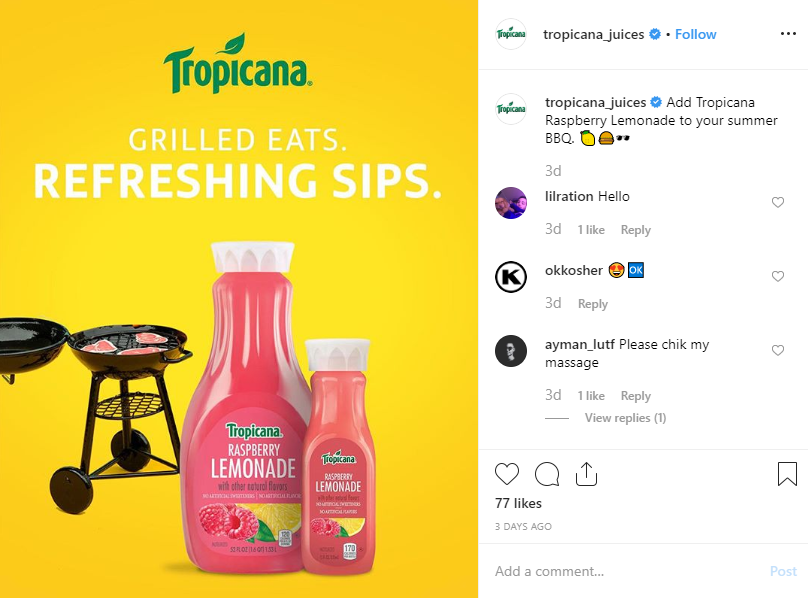
Tropicana doubled its Instagram and Facebook budget to more closely replicate its typical TV spend, running a series of short video ads designed to motivate in-store sales over the next three months. It did just that.
Tropicana decided to use video for their ads, which is always a good investment because videos get 21.2% more interactions compared to images.
They also used witty and fun captions that connected well with their audience.
Maybe you’ve been running Facebook and Instagram ads for a while, and you’re looking for ways to improve what you’ve built on. Here are some ad guides that are sure to help:
- 13 Facebook Ads We Got That Were Right on the Money and Why
- For the Gram: The Anatomy of a Perfect Instagram Ad
If you’re a beginner with social media ads, don’t worry, I didn’t forget you. I’ve got a few step-by-step guides to dip your toe in the world of social media ads:
- Facebook Ads Effectiveness: Myths, Misconceptions, and Mistakes
- 15 Powerful Instagram Marketing Secrets You’ll Want to Steal
When it comes to your ad budget, you can ask yourself these questions to make sure you’re moving in the right direction:
- How much do I plan to spend on this ad?
- Which social media channels are best for advertising?
- What is the cost of video vs. static image advertising?
- Does my budget accommodate A/B Testing?
5. Create & Invest More in Content Marketing
Increasing your social media ROI can be as simple as creating better content. Content marketing generates over three times as many leads as outbound marketing, and costs 62% less.
Guess what the most effective SEO technique is?
Content creation.
With captions with keywords, images with alt text and hashtags, content marketing can boost your SEO ranking if done right.
Still need convincing? Here’s a Complete Breakdown on the Value of Content Marketing.
Don’t fall into the trap of thinking that anything you post on social media is worth engaging with or sharing. To keep up with competition, you’ll need to step up your content marketing game.
Major brands like Burger King have mastered social media because they put thought and planning into their content marketing, making sure their traditional marketing (TV commercials and in-store posters) matches their social media and creating content around pop culture references that go viral.
Take Burger King’s new campaign “Stranger King” based on the popular TV show Stranger Things.
And they promoted it via social media, giving viewers a uniformed feel of the marketing campaign.
we thought about turning your drink upside down first. but, you know…that didn’t work out so well.
served upside down at select bk locations today only. pic.twitter.com/IYv0cmlaLI
— Stranger King (@BurgerKing) June 21, 2019
Content marketing works if you’re in it for the long game, which includes taking the time to build a strong relationship with your audience, constantly producing high-quality content that is relevant, and keeping active on social media.
Here are some tools that can help with your social media’s content marketing:
Social Media Management Platforms:
You can use social media management tools like Buffer to manage your social media content by scheduling and publishing posts on all your social media accounts, from Facebook to Linkedin.
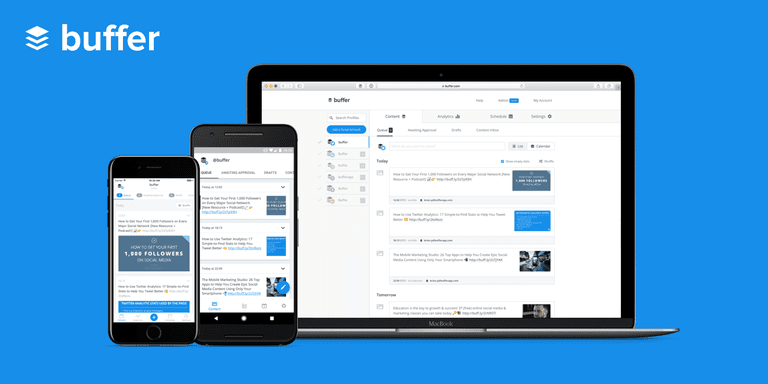
Google Analytics:
Track the links and website clicks to your website or landing page to see which social media content drives the most traffic and try to repeat the process. Google Analytics isn’t just for your website; it can also be used for your website’s social media. Here’s a list of the best ways to use:
- Google Analytics on Facebook
- Google Analytics on Twitter
- Google Analytics on Instagram
- Google Analytics on Pinterest
Instagram & Facebook Shopping Features:
Use Instagram and Facebook to sell your products and services. Both social media giants now offer checkout services so customers can shop online without leaving to go to your website.
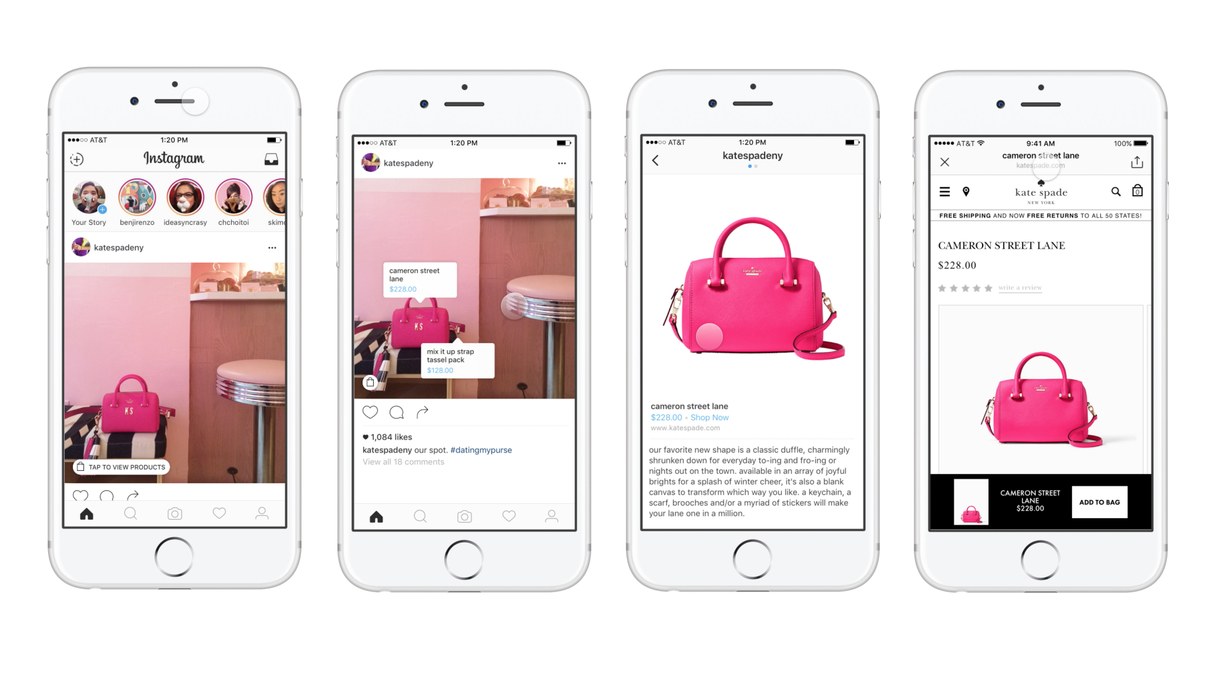
Need more content marketing tools? Here are 77 Tremendous Tools to Make You a Content Marketing Superstar
Summary
There you have it. Here are six expert ways to increase your social media ROI:
- Measure Your Social Media ROI
- Have a Social Media Strategy
- Create a Social Media Marketing Funnel
- Manage Your Social Media Ads Wisely
- Create & Invest More in Content Marketing
Need help with social media
Book a free call to learn how our team of marketing experts can help you increase your social media ROI.
Related Articles
- Social Media Promotions: 41 Ideas, Examples and Tips
- 20 Social Media Marketing Tips from the Experts
- The Top 30 Social Media Marketing Articles You Need to Read

